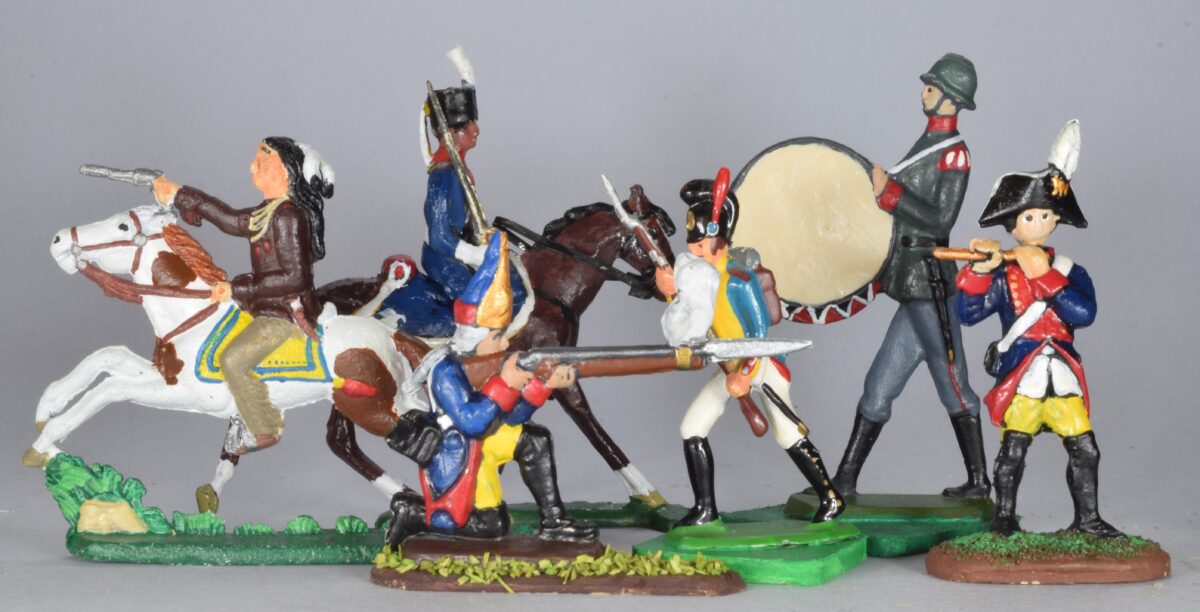There are some companies that produce moulds for the collector to make their own miniatures at home. This option is more useful for those who are interest in the wargame hobby and need a large number of similar figures.
Bibliography
Bartlett, Chris (2015). Not everyone´s cup of tea… Toy Soldier Collector, 64: 48-49.
Tisone, Michael (2016). What´s old is new again? Toy Soldier Collector, 69: 60-61.
Meisterzinn
This German company produces moulds in metal and it is possible to make soldiers from the 30 Years War, the Seven Years War and the Napoleonic period. The figures are from the semi-flat type.
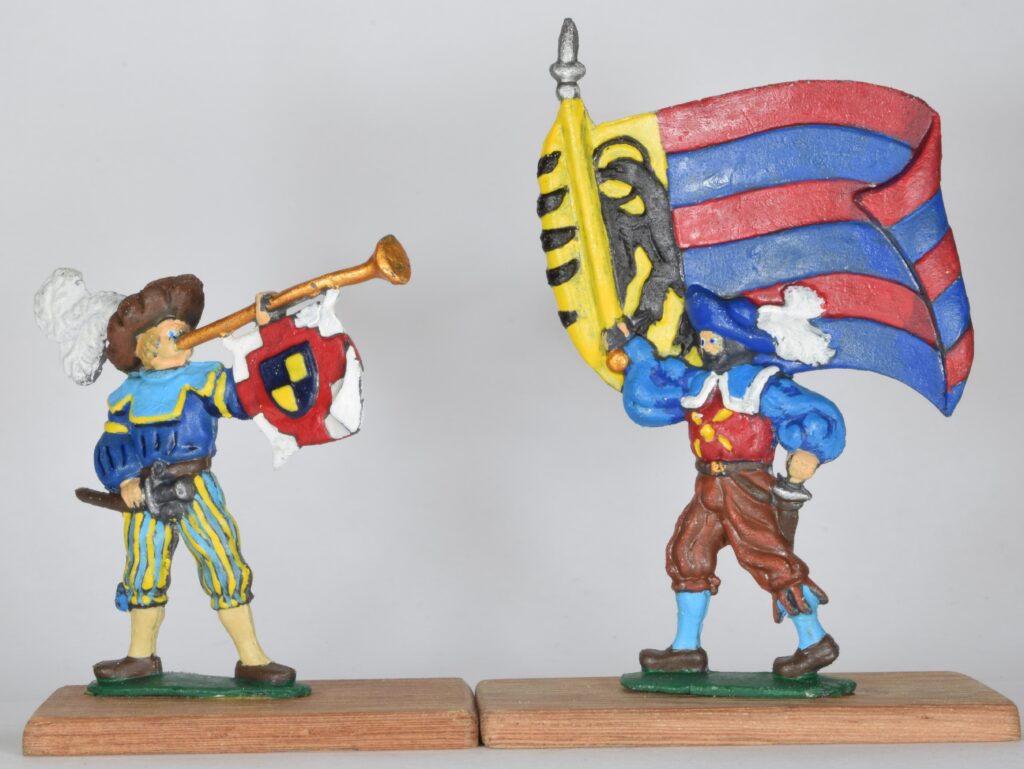
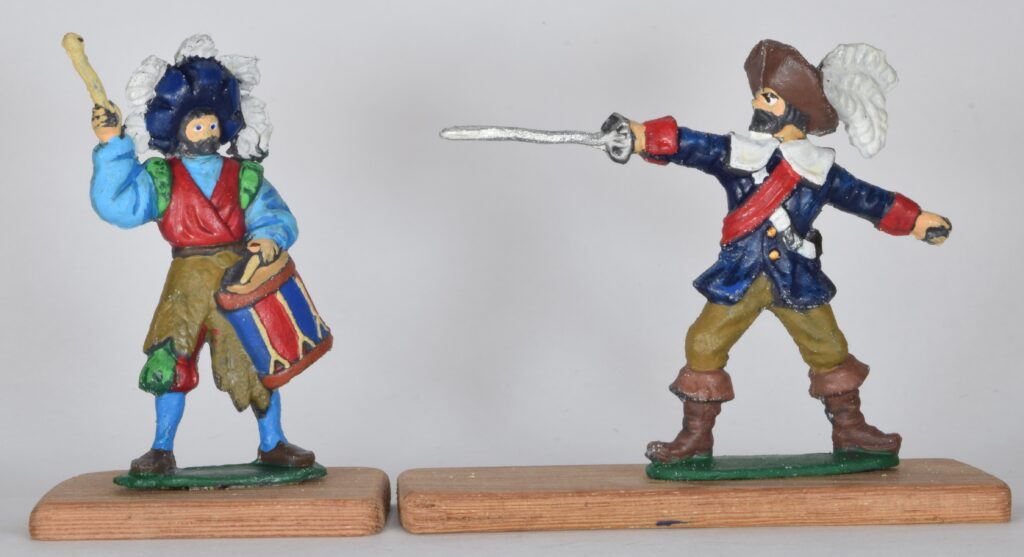
These are semi-flat figures from the 30 Years War period. As usual I glued figures on hood bases for stability. The mould references are, respectively, 1304, 1303, 1304, ?.

The first figure is from mould 1106 and the mortar and the second figure were made with mould 1008. The mortar is made of two pieces.
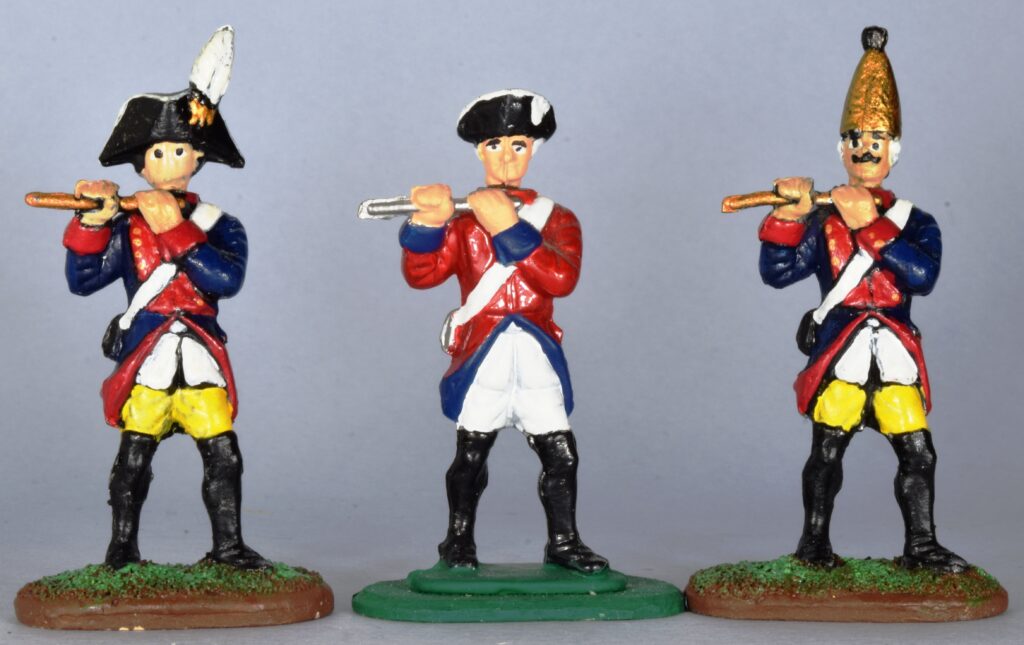
All the bodies are from mould 1323 and only the heads were changed.
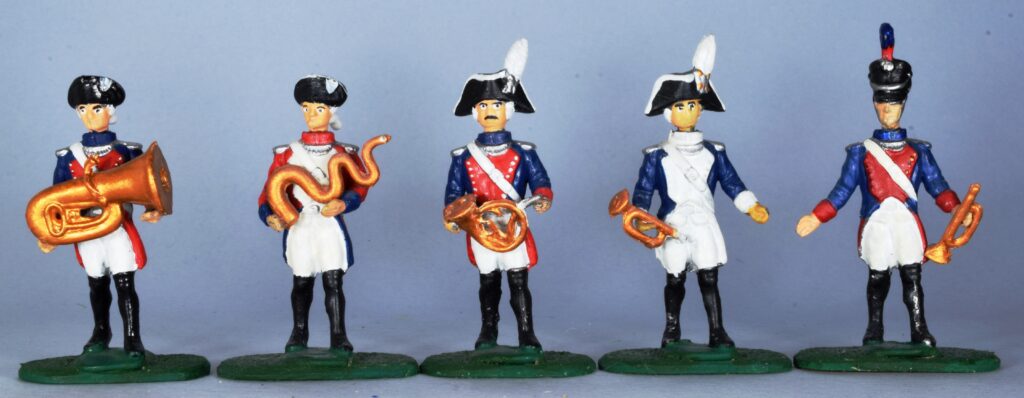
These figures were from mould 1332 with different musical instruments and heads. Some arms were twisted.
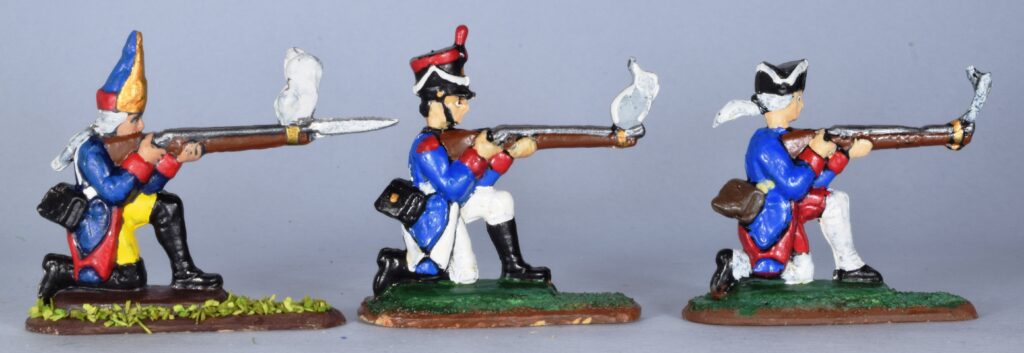
This figures were made with mould 1105. The first head is the original, the other heads were from other moulds. Sometimes the gun is not completely moulded.

Horses and riders are from mould 1322. Horses were glued on wood bases for increased stability.
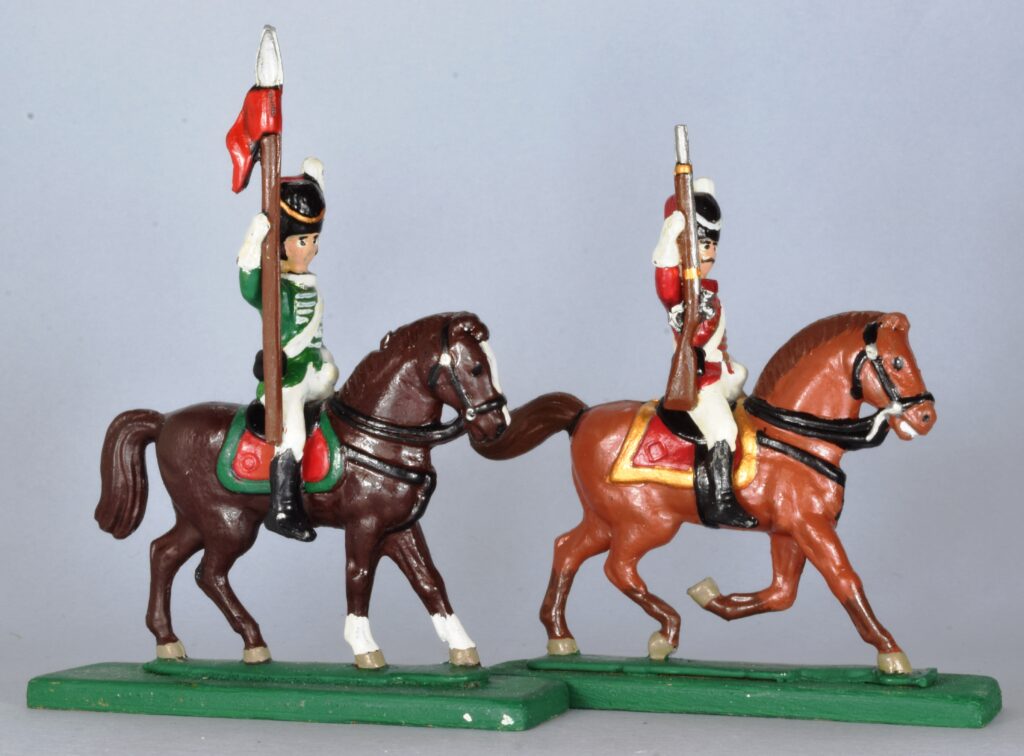
The second horse is from mould 1325 and is very difficult to cast properly. Riders are from that same mould.
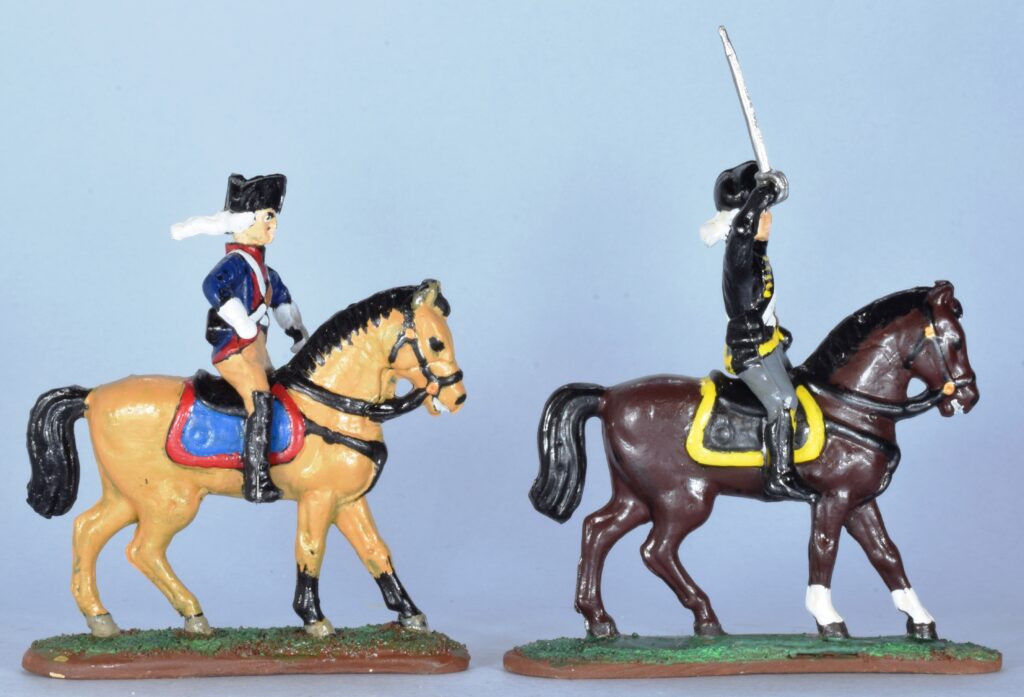
More cavalry.
Prince August
This company produces moulds made of rubber in various scales. Themes are also diverse ranging from medieval times to fantasy and Far West or napoleonic.
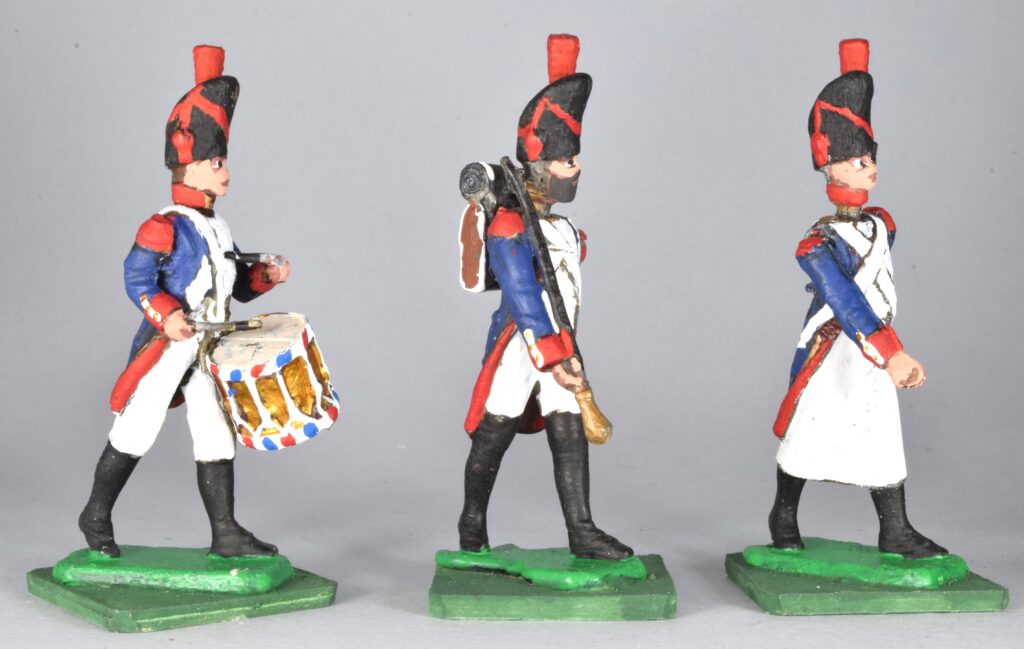
These figures were moulded with various separate parts, like arms and heads. This option permits to mould 3D figures. The scale in approximately 1/30.
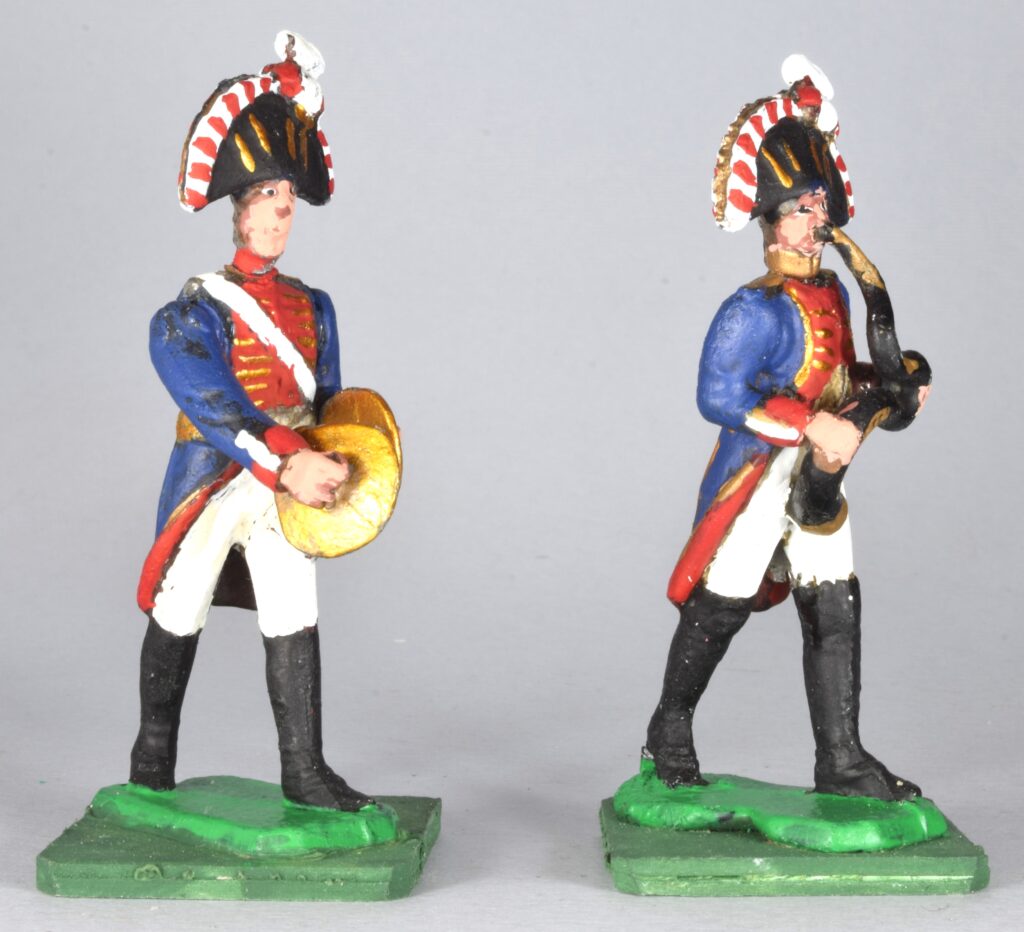

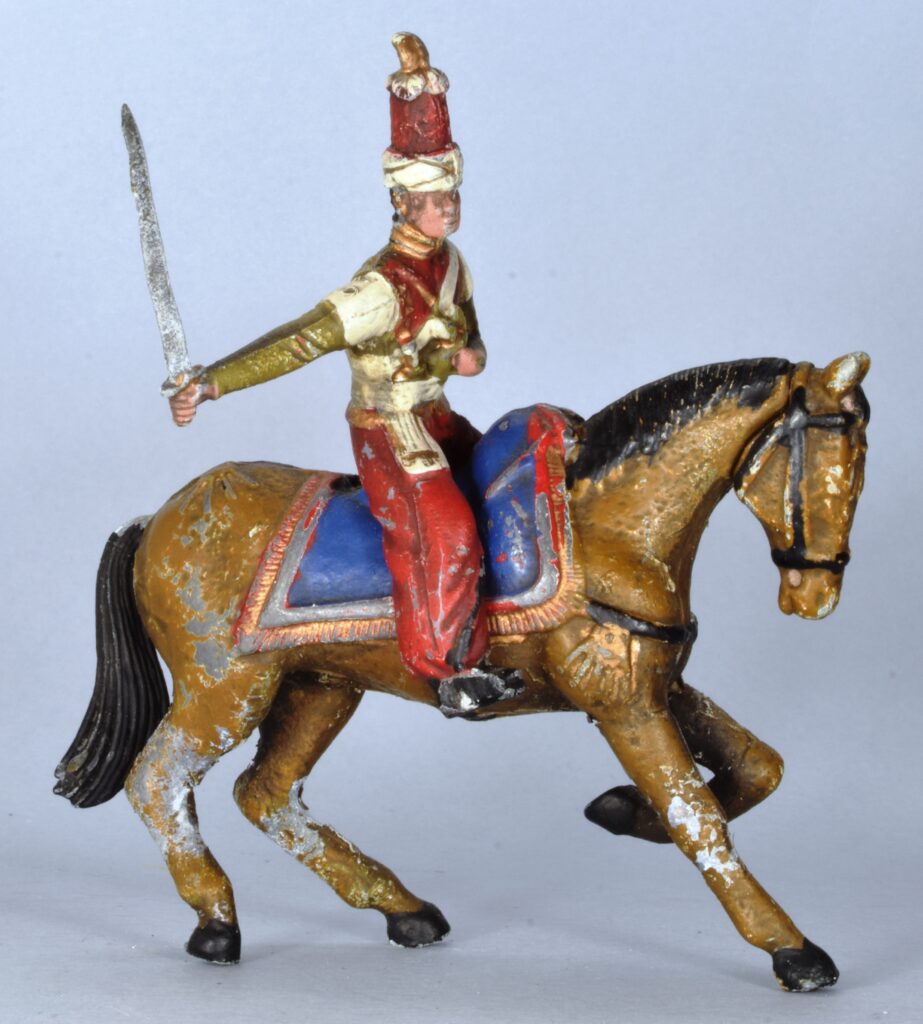
There are deficiencies in the moulding process that are common in this type of work.
Under each figure is indicated the mould number.
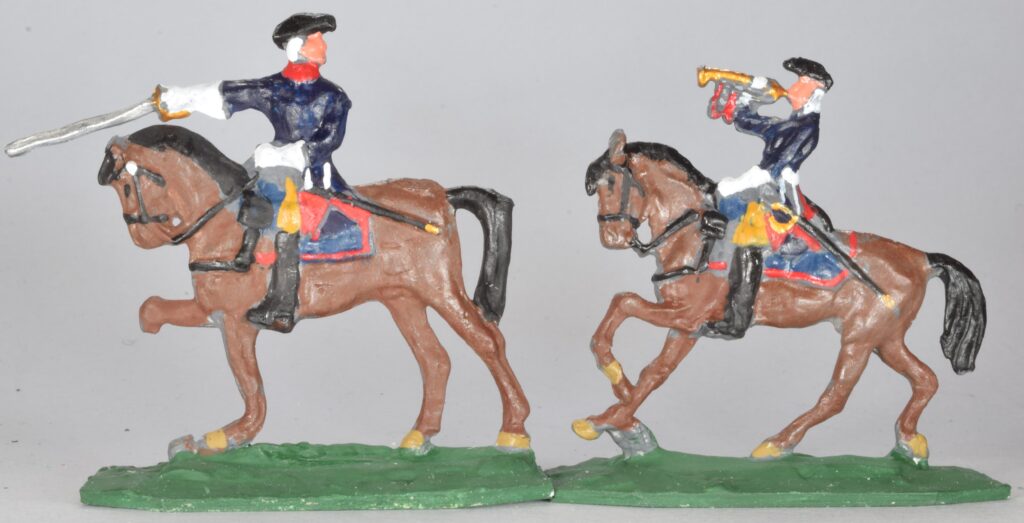
12 26
Unfortunately the fist horse broke one leg. Semi-flat figures.
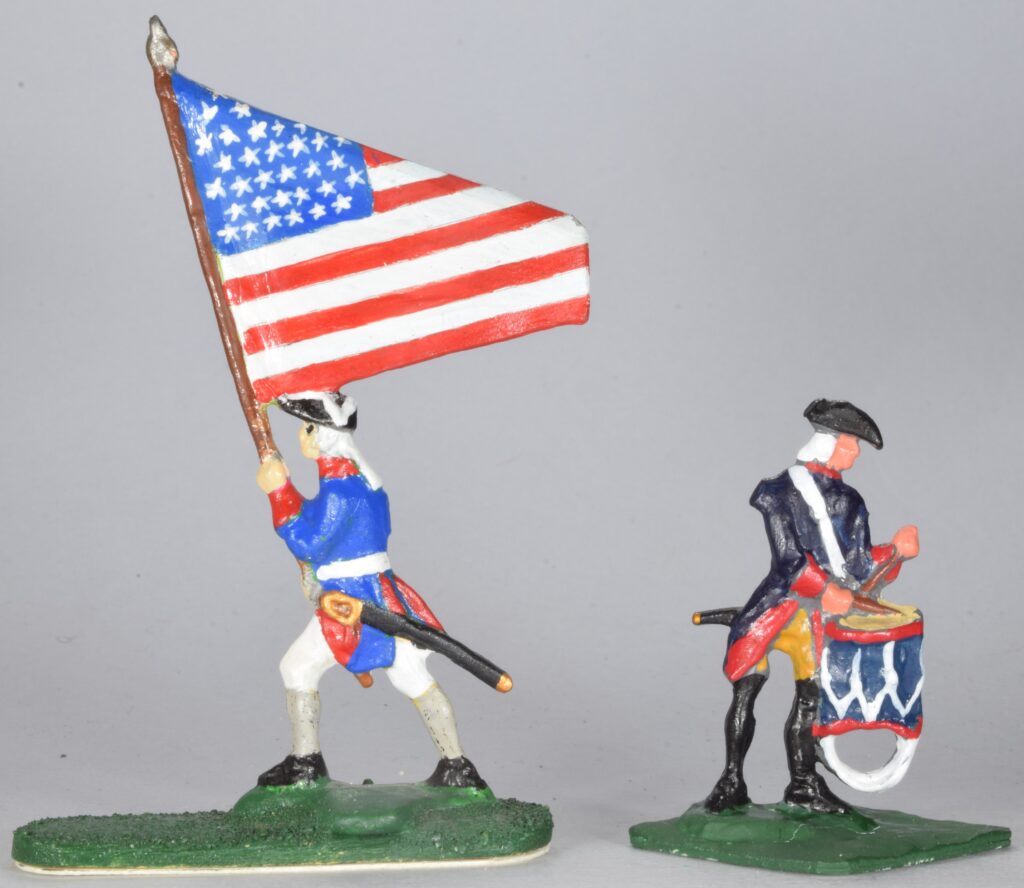
21 27
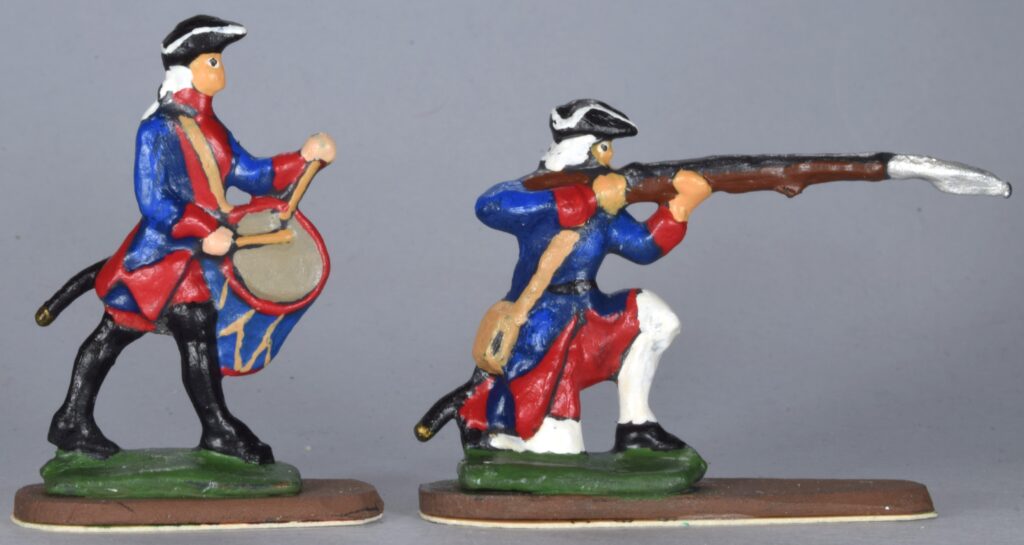
22 24

23 50 903

29 46
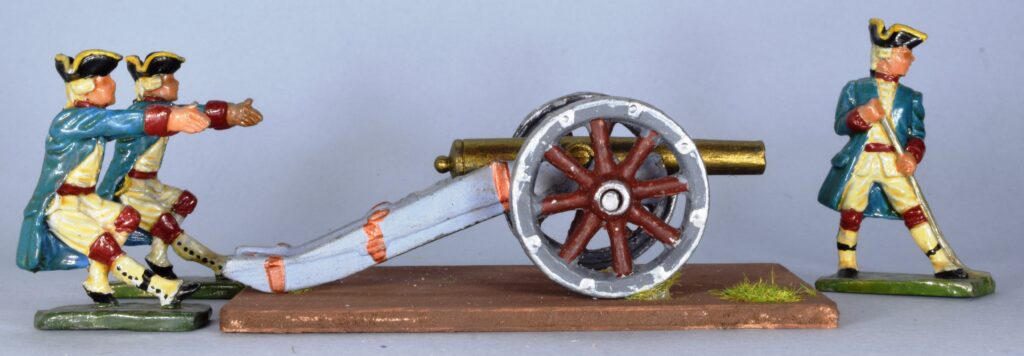
71 32 71
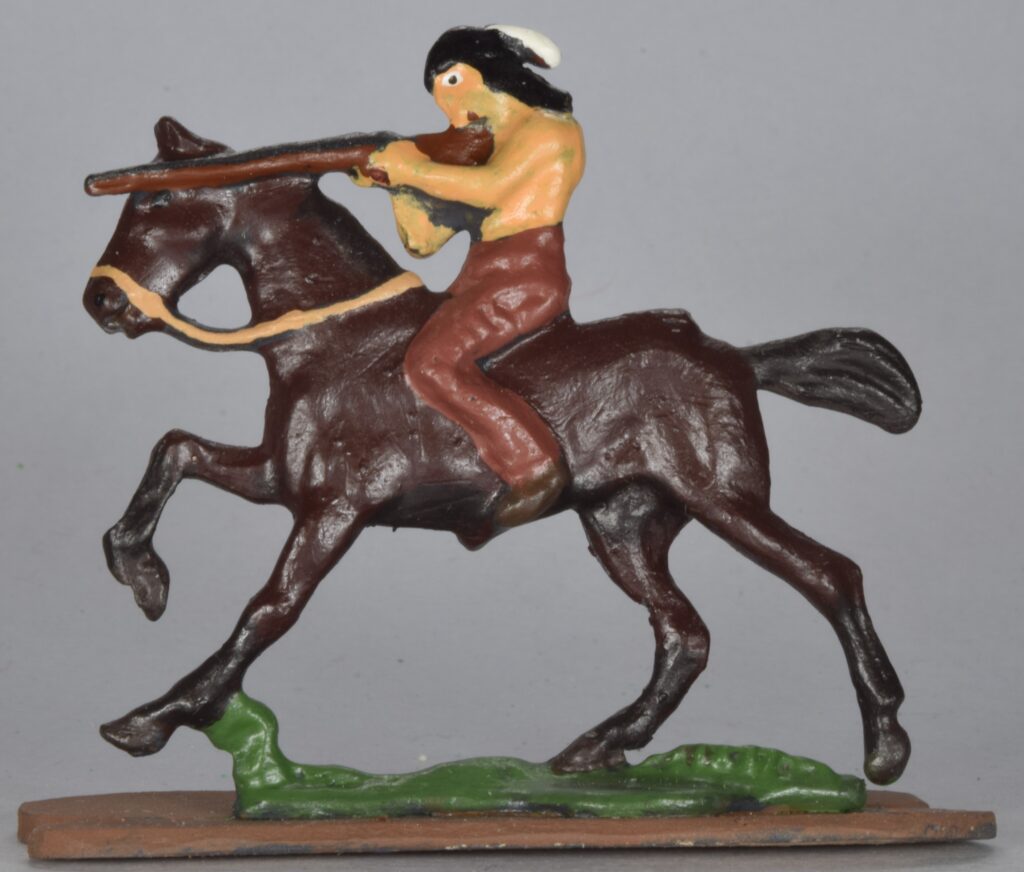
203

205 206
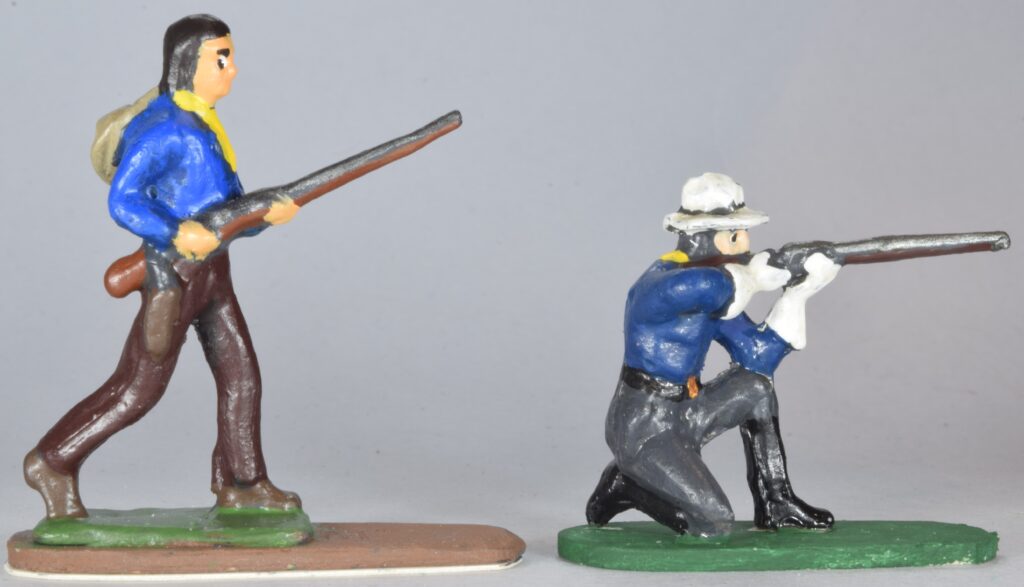
212 214

905 906
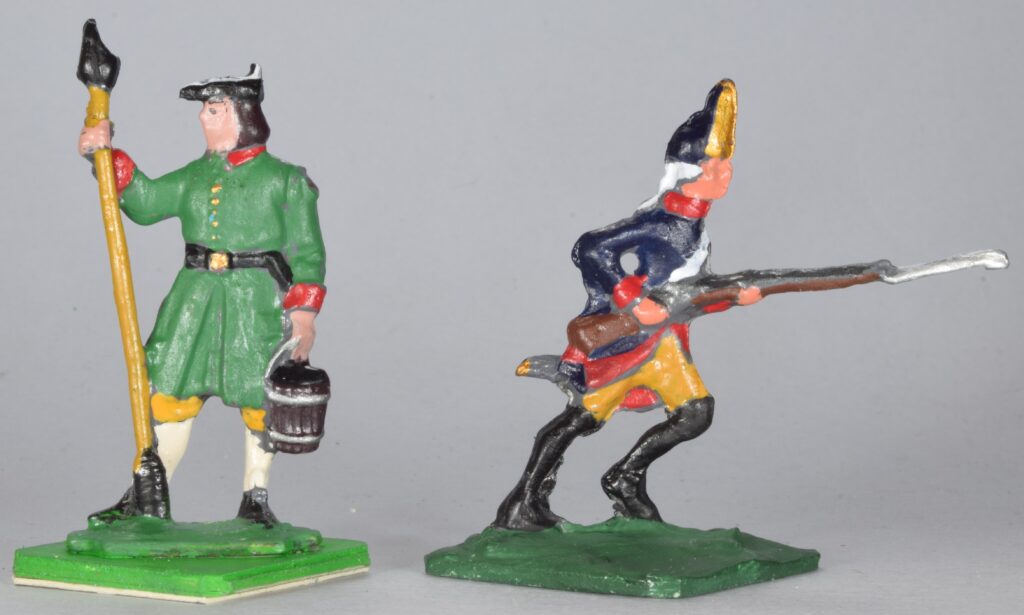
954 20
Schneider
This German company produced a very large number of moulds in different scales. The bases are hexagonal with two sides longer.
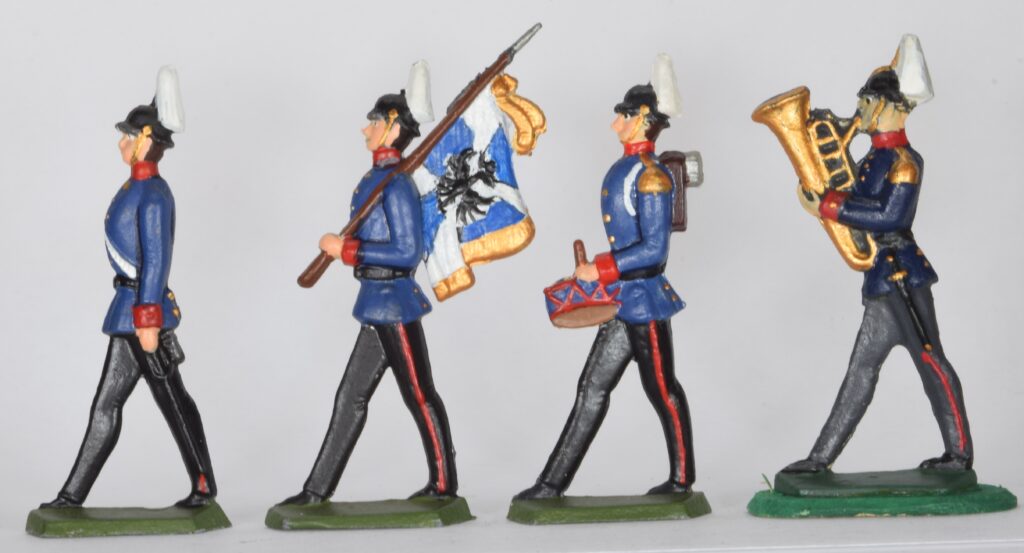
These figures represent the German army, probably, in the transition between XIX an XX centuries.
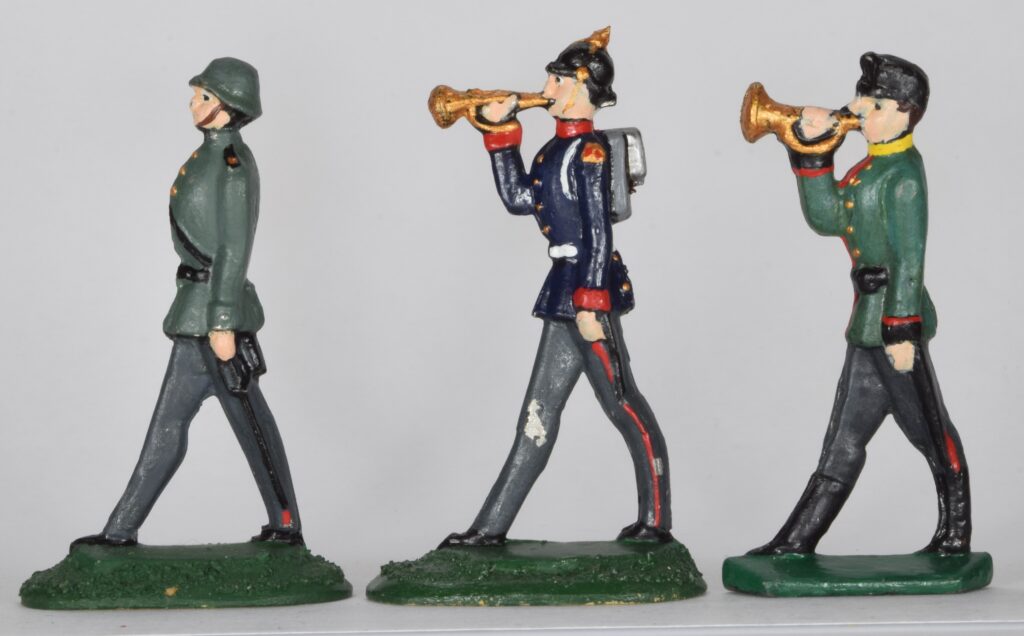
Various types of German soldiers.
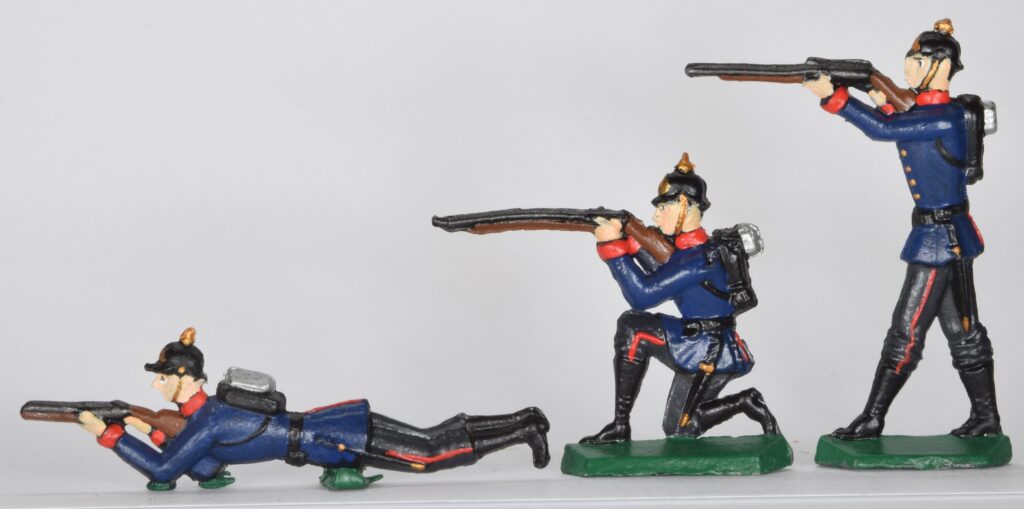
These soldiers represent, most probably, the German army from the French/Prussian war of 1970. The barrel of the riffle from the first figure was not complete.
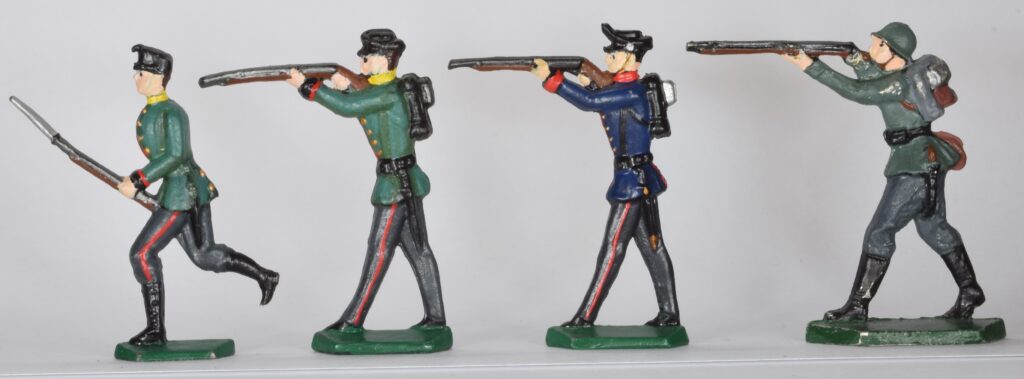
More German soldiers from different periods. The last one is clearly from the XX century.
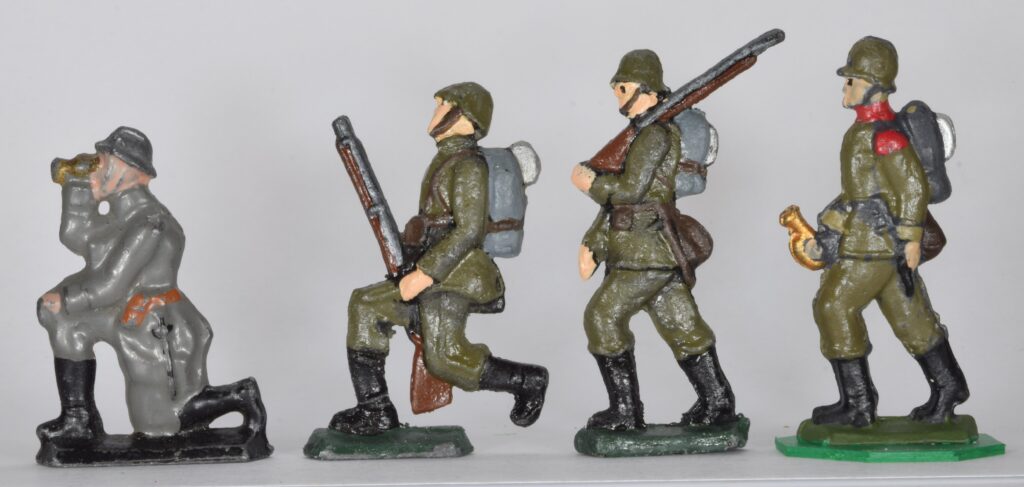
These figures are very different from the previous ones, having a chunky appearance. To identify the army they are intended to represent is difficult.
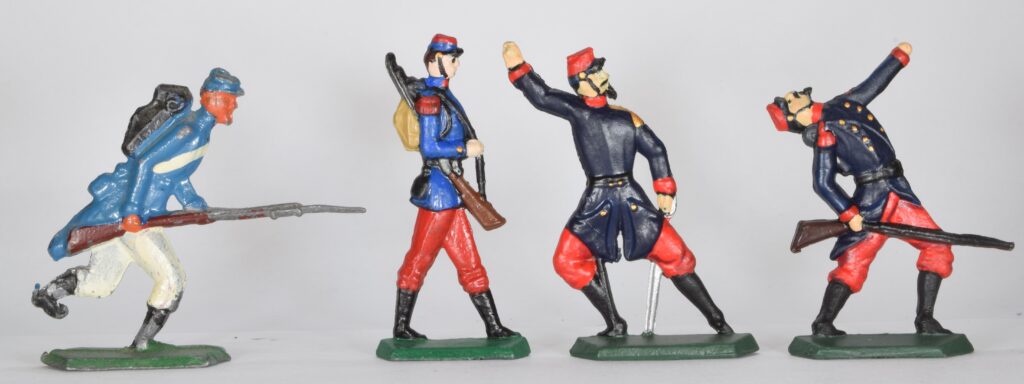
These four soldiers could represent the French army of 1870. The French casualty indicates that the company is from Germany…
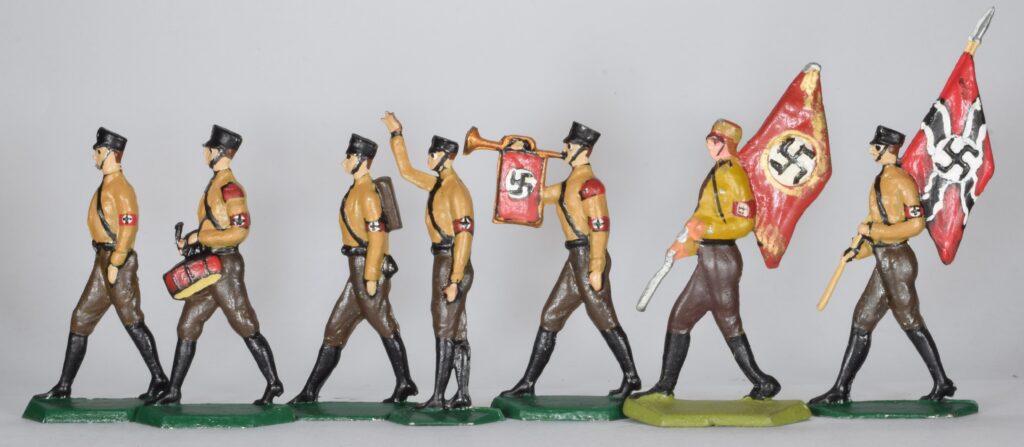
These soldiers were painted as SA from the Nazi period of Germany history.
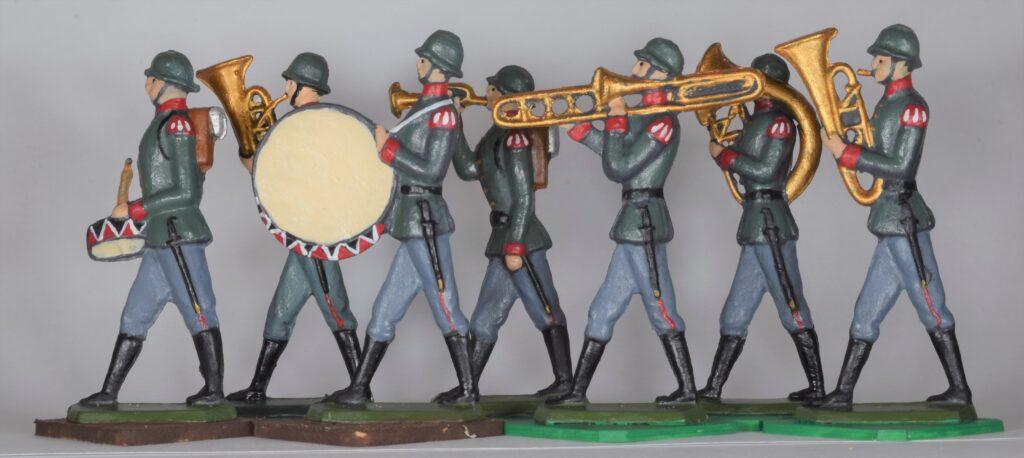
Musicians are also present in Schneider production.
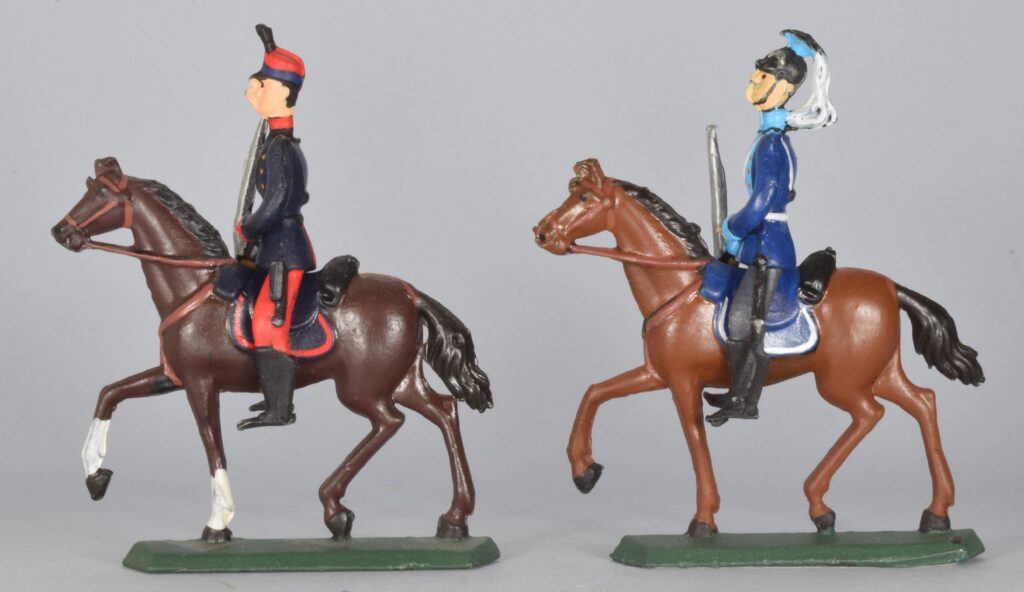
In this case riders and horses were moulded separately.
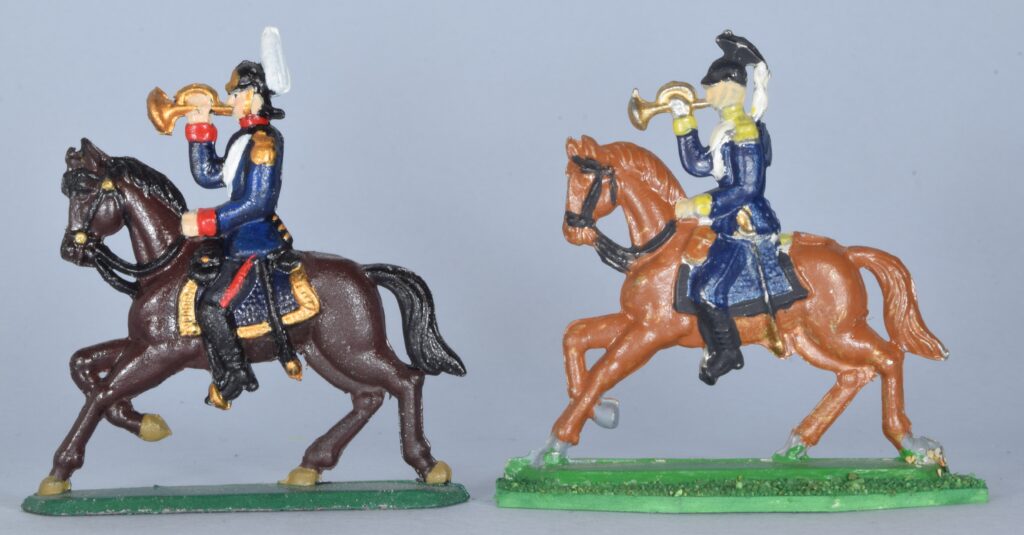
These cavalry soldiers are one piece castings.
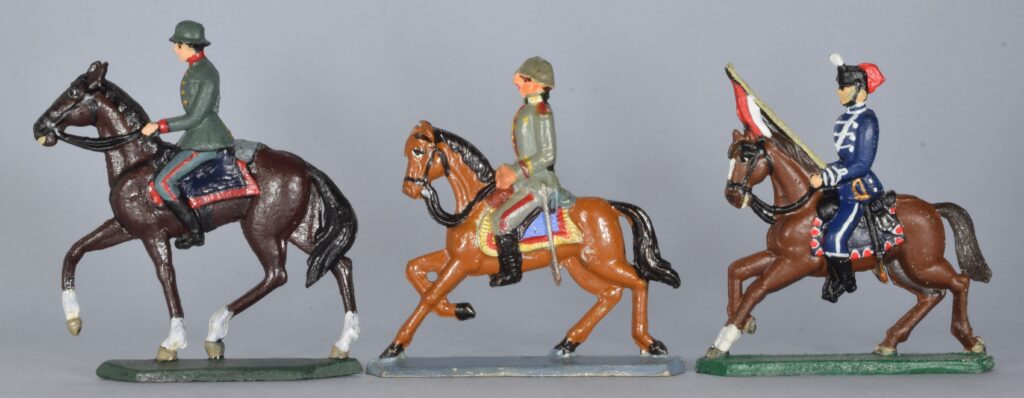
More examples of one piece castings.
von Schildkröt
This German company produces moulds in the popular 40mm scale. Some figures are from the semi-flat type and other are clearly 3D (or “ronde bosse”). The bases are typically octagonal with two sides clearly longer. This morphology helps the identification of figures. The figures were bought already painted in a flea market.
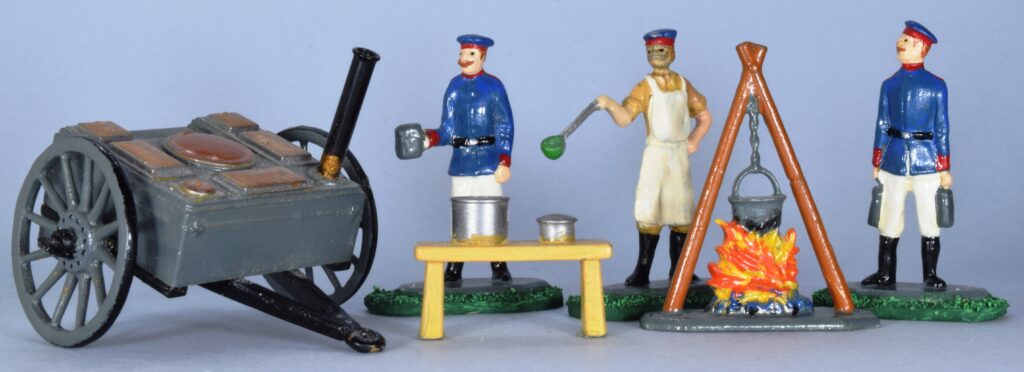
This is a very nice group of figures around a field kitchen in a very relax pose.
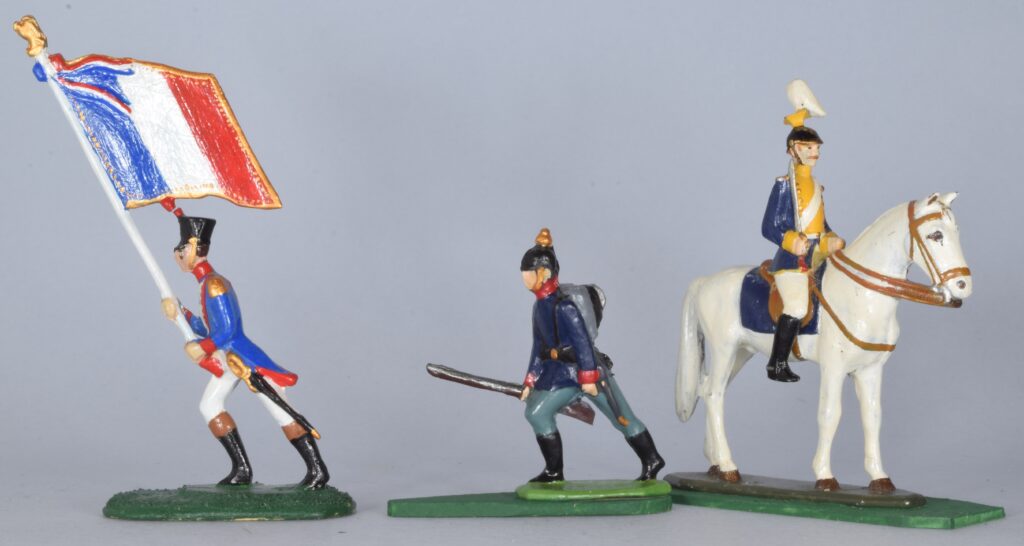
These soldiers are from the Napolenic (standard bearer) and French/Prussian War. The horse and rider were moulded separately.

An artillery piece pulled by horses. The wood base is not original. Notice the octagonal bases of horses.

Musicians are one them very common in home made figures. These figures are from the semi-flat type.
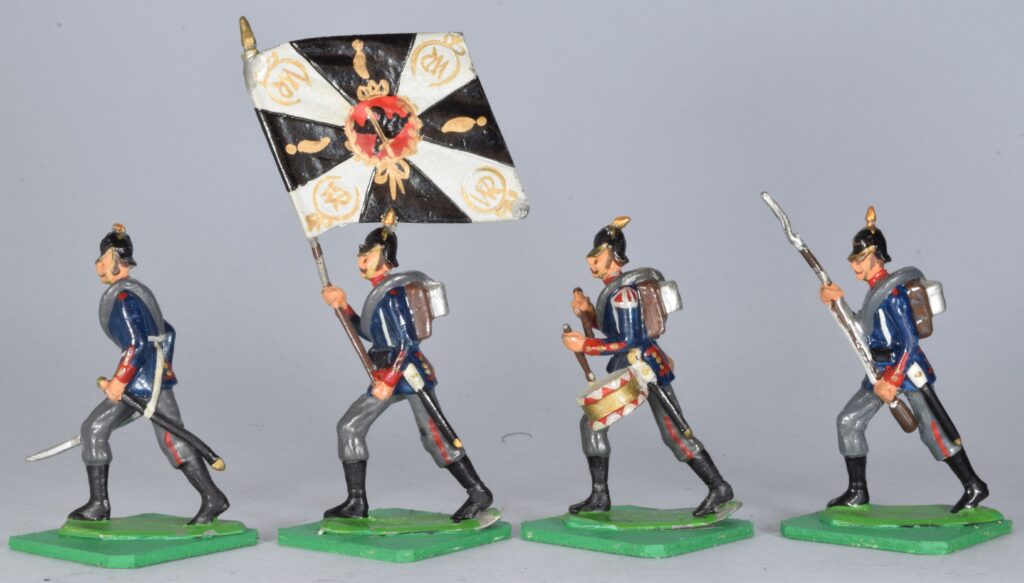
These are German army soldiers with campaign equipment. Figures were glued to cardboard bases.

These soldiers are more lightly equipped.
